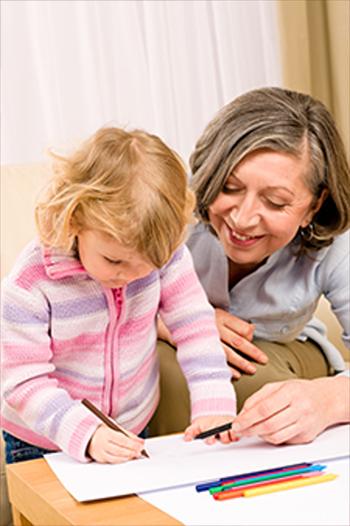Recycling cards box
Duration/age

Different things are special in different families. We mark these special occasions with a card. It might be for the birth of a baby, a birthday, National days, naming days or cultural celebrations.
After the big day has been celebrated and it is time to take down the cards, what will you do with them?
Cards can be used for cutting and drawing, sewing around, creating new cards and special letters. They can even be used to make a book about the special event.
Create a box to store the cards that you want to keep. This can become the special day or rainy day box you can use for making and creating special projects. As you look at the cards together, look at the picture on the front and see if you can tell what the card was for or what the message inside might be about. Can you remember who it was from?
This card has a reindeer on it. Who do you think sent it to us? Was it for a special day?
If your child wants to make a card for someone, talk about how to choose a card from the box.
Will you select the card because you like the picture on the front? Maybe the picture is one that someone else would like. Is one card enough to make a new picture or will you need to use several cards to get an image you like? What will you write on the inside of the card?
Materials you will need
- Paper
- Glue
- Boxes
- String
- Scissors
- Textas
- Card
Skills this activity improves
Why does this matter?
By exploring the picture, words and the images on the card children are learning that language can be shared in different ways. Often we think of language as only spoken or written not as a picture or an image that can help us to understand the feelings and emotions of the person giving the card. As children create their own writing, pictures and symbols they are learning that we can communicate through writing and drawing. Children learn that letters make up words, and that words make up sentences to tell a story.
As they write and develop images they are also experimenting with how and where to place the image and words on the page. By experimenting with placement and organisation of the words and images they are exploring how to change the mood or effect of the message they are creating.
What does this lead to?
When children create they are developing language to describe what they know and have seen. As they use language with their pictures or experiment with colour, shape and symbols they are developing an understanding that pictures can tell a story and they can change the story by using different images, colours or placements on the page. By experimenting with changing the design children are learning to add or change the emotion of the story.
As they combine writing, drawing and symbols they are gaining an understanding of different ways of communicating and that writing conveys meaning. By writing in a card children learn that words can be written and that this communicates a message to another person. Children are learning the permanence of written communication as compared to spoken communication.
Language to use
- Front, back, top, bottom
- Left, right
- Writing, drawing, pattern, numbers, pictures
- Card, letter, collage
Questions to use
- Who should we send this to?
- Which side should we write on?
- What do you want the card to say?
- What can we make with the card?
- What is the picture about?
Useful tips
- You might also like to take a look at the activities Exploring junk mail and Writing a letter or card.
- Remember to talk to your child in your home language.
More ideas
- Create a collage box that includes the cards, glitter, ribbons, buttons and pieces of wrapping paper.
- Take photos of family members and write their names underneath. Children can use this to help write names on the cards that they make.
Variation by age
Three to five year olds
- Use a hole puncher to punch around the edge of the card. Add string or coloured wool for threading in and out of the holes.
- Cut out pictures and patterns from the cards and glue the pieces onto stones. Your child can move the stones around to tell different stories with the stones.
- Use the cards for sorting into ones that are the same or that represent a theme.
- Cut out pictures of plants, fruit or people from the front of the cards. Glue them onto blocks and let your child use them for pretend play.
Questions to ask
- Which ones are the same?
- Which ones are different?
- Which picture has plants on it?
- Which picture has animals on it?
- Which one has no writing on the front?
Language to use
- Front, back, edge, middle
- In, out, over, under
- Animal, plant, food, fruit, flower, person, girl, boy
- Word, letter, number, pattern, picture


